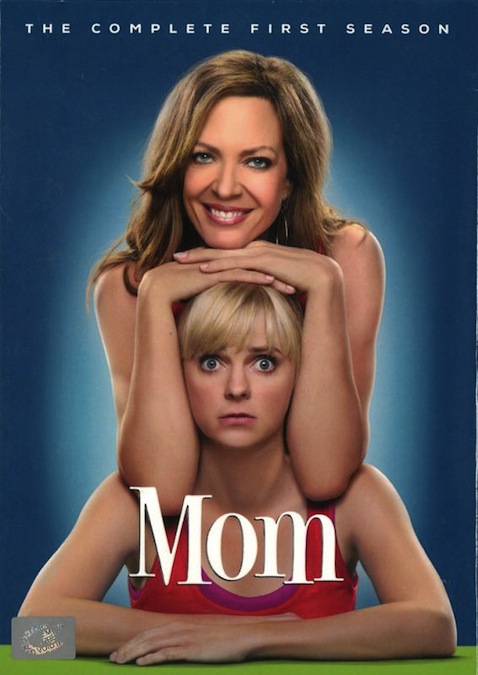
Photo by Peter van der Sluijs, courtesy Wikipedia Commons.
While the passage from childhood to adulthood is murky, at best, for many of us, virtually all societies determine a specific age that separates the children from the adults — the age when an individual assumes his communal and religious responsibilities to society.
For Jews, the establishment of becoming a Bar Mitzvah at 13 years plus one day for boys and a Bat Mitzvah at 12 years plus one day for girls, has historically been viewed as a first step in a young person’s acceptance of the obligations to family and community as a responsible Jew.
Though Jews have wrestled with the problem of how to safeguard the spiritual elements of Judaism in an age that openly embraces materialism, most Santa Barbara Bar and Bat Mitzvah celebrations are relatively low key, at least when compared to what goes on other places.
Jennifer Lebell, whose son, Jacob, recently had his Bar Mitzvah, recalls a family Bar Mitzvah, which took place in Canada. “It was the most amazing thing I’ve ever seen in my life, ” she said of the ceremony, which she described as being “very light on the Judaism.”
“There’s this elaborate stage and then there’s this little stage with a flowered archway and these (two 15-year-old) glamour girls are on each arm of the Bar Mitzvah boy, as the master of ceremonies said, ‘And now, may we present…’ and it totally darkens, and then actual fireworks come out of the arch,” she laughed.
“I mean it was such a stereotypical … Hollywood would have just gone nuts. … It was so bizarre. We knew that if we were going to do anything, that was the one thing that we were not going to do.”
Avoiding the glitzy route, the Lebells elected instead to take the path advised by Rabbi Jeffrey Salkin in his book, Putting God on the Guest List. “Decide as a family what you are celebrating and what this moment in your life means. This decision will help guide you through the rest of the planning stages.”
For the Lebells, this meant enrolling Jacob into Hebrew school (a large part of the Bar Mitzvah involves reading from the Torah in Hebrew) when he was in fourth grade.
“Learning to read in Hebrew was a special challenge for Jake because he has a learning disability,” said his mom. His teachers weren’t very optimistic, but his mother was determined. “It just proves that you can do something if your mom puts your mind to it,” she said.
“When I started working on my Bar Mitzvah, it was mostly about my parent’s expectations and their faith that I could master this stuff,” said Jacob. “It seemed too big and I was in denial, even as I went to my weekly classes. Eventually, it all started to make sense, and so what I learned is that if I keep showing up and have the right motivation, even huge things like this are doable.”
“One of the things during this ritual that I really love is the handing down of the Torah,” said Jennifer. “The Torah is taken from the ark by the rabbi and given to the oldest direct family member, in this case Grandma Malca and Grandpa Don, who then pass it to us (the parents), and then we pass it to Jacob who then processes around the sanctuary holding it allowing everyone else to touch it too. The other aspect I find significant is the grueling study and the humbling presentation before community. It really seems to give them acknowledgement for what they have done and confidence that if they can do this, they can do anything.”
For some families, instead of the traditional Torah reading and reception after the services that the Lebells did, this involves celebrating with another kind of journey. For example, last summer Madeleine Bordofsky and her father Michael took a trip to Europe to explore their Jewish roots. While Madeleine is definitely enjoying attending the Bar and Bat Mitzvah parties of her friends, describing one of them as “the best party ever,” she said, “I’d rather have a trip.”
Another important part of the ritual is a good deed, or a mitzvah, as part of the initiation into adulthood. A percentage of the total cost of the reception food is typically donated to Mazon, an organization that helps feed hungry people nationwide. Since money is commonly given as a Bar or Bat Mitzvah gift, most people designate a portion of their gifts to go to charity. For example, Jacob Lebell was planning to donate to Direct Relief International’s Tsunami Relief Fund.
While some may debate whether it’s realistic for a 13-year-old to be considered an adult, most Jews view the Bar or Bat Mitzvah ceremony as just the beginning of the acceptance of responsibility.
As Jacob wrote, “Through the entire time of writing this speech, the rabbi, the cantor, my folks and my godmother kept asking me what does being a Jew and having a Bar Mitzvah mean to me. I still don’t really know, but I do know I have begun to find out.”
=
What is a Bar Mitzvah?
Historically Bar Mitzvah and later Bat Mitzvah is the ceremonial occasion that marks the time when a young person is recognized as an adult in the Jewish community and is responsible for performing mitzvot. For example, before children are Bar/Bat Mitzvah, they do not need to fast on Yom Kippur.
The ceremony consists of the young person chanting the blessings, and his or her Torah portion, which is the Torah portion of the week.
Over time the Bar/Bat Mitzvah celebration party has evolved. The custom is to serve a special meal to commemorate the mitzvah taking place. Moreover with extended families spread out over the country, the Bar/Bat Mitzvah is also an opportunity for families to reunite and spend time together.
Children begin studying for their Bar/Bat Mitzvah by going to school some years before they actually turn Bar/Bat Mitzvah age.
In the year leading up to the event the person begins more intense training focused specifically on their Torah portion and the accompanying prayers. The day the young person is Bar/Bat Mitzvah is the first time he or she will have ever been called to the Torah.
In addition to preparing one’s Torah portion, the preparatory year serves as a chance for the young person to begin thinking about what being a Bar/Bat Mitzvah really means. In some synagogues the young person may make a commentary on their portion and try to apply the teachings of Torah to his or her own life.
Spotlight on B’Nai Brith
There are 28 young people scheduled to have Bar or Bat Mitzvahs at Congregation B’Nai Brith this year, said Cantor Mark Childs, who teaches the students at their final preparation stage. Of those 28, 13 are girls, he said.
“We’re a reform, progressive liberal synagogue, so we give equal status to both genders. You might find fewer girls being Bat Mitzvah in an orthodox setting,” Childs said.
Bar and Bat Mitzvahs are usually scheduled far in advance. For example, Childs said he put one on the calendar this week for June 2007.
While some students begin to study Hebrew in kindergarten, “even as young a preschool,” according to Jennifer Lebell, who has three children, “it really starts to get intense in fourth grade.”
For grades kindergarten through third, religious school is on Sunday mornings. In fourth grade, a Wednesday afternoon class is added. In seventh through 10th grade, students begin to attend a junior high and high school class on Wednesday nights, rather than Sundays.
In addition, when their Bar Mitzvah date is set, “they have private tutoring nine months before the date,” said Childs. After the Bar or Bat Mitzvah, conversational Hebrew becomes an elective, he explained, with further classes devoted to religious study. “We have a 90 percent retention rate after Bar Mitzvah, then they are confirmed at the end of 10th grade.”
While it’s tough to keep up that schedule in high school, “it’s a test of their priorities,” said Childs. “We hope that religious education is going to remain a primary priority.”





 I did all of my best parenting before I had children.
I did all of my best parenting before I had children.